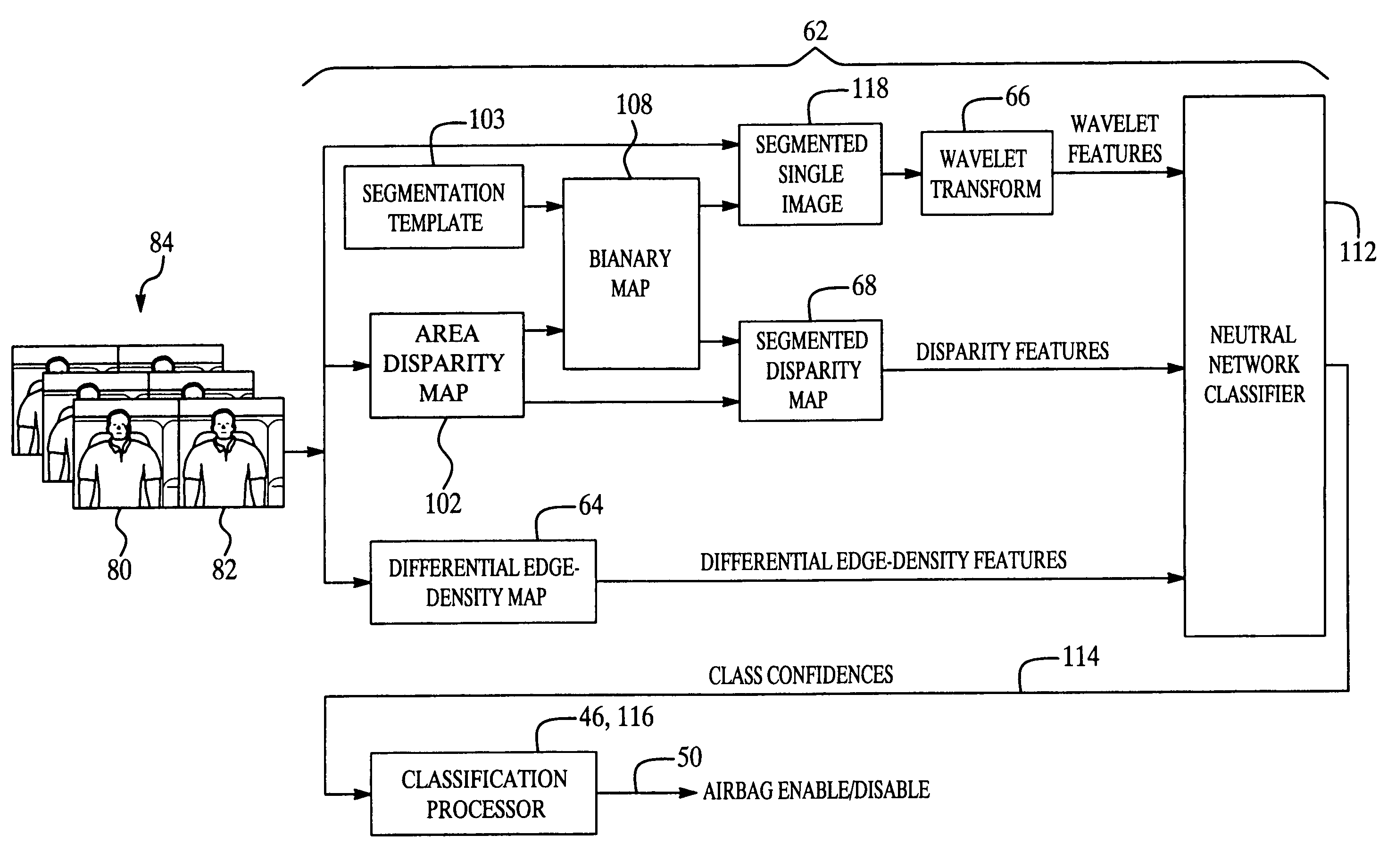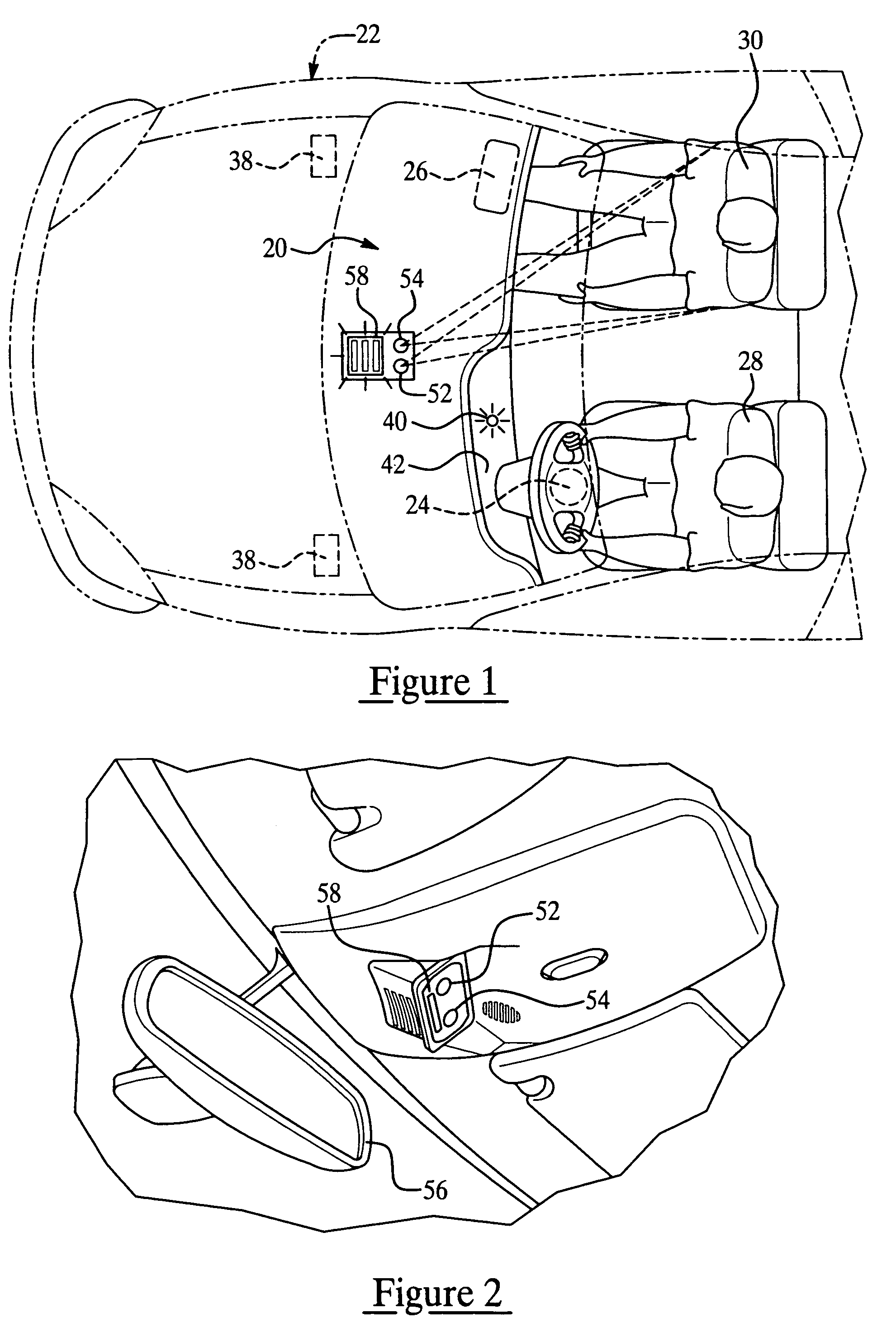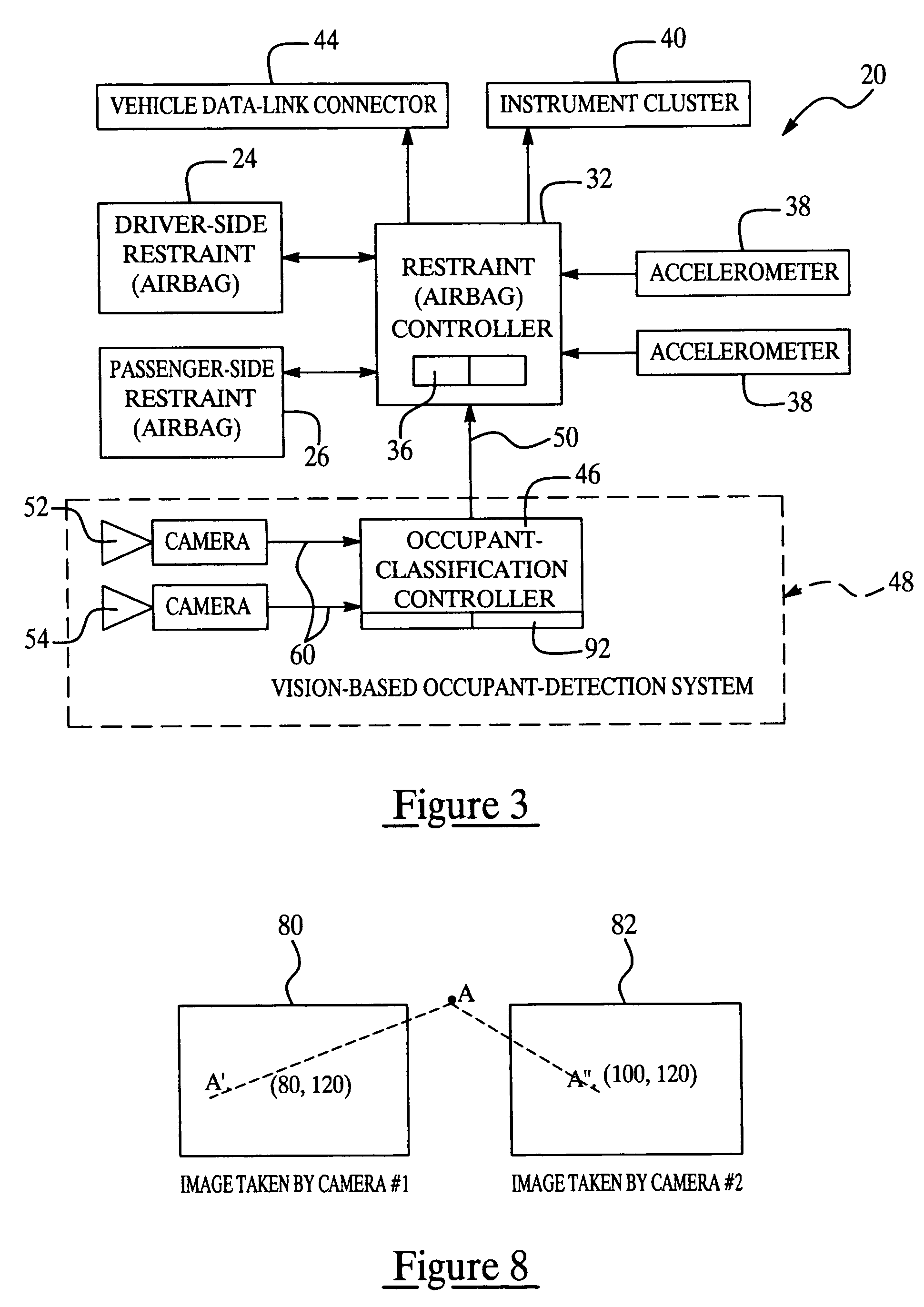Vision-based occupant classification method and system for controlling airbag deployment in a vehicle restraint system
a technology of vision-based occupants and classification methods, applied in the direction of pedestrian/occupant safety arrangement, special data processing applications, and single/parallax transmission of signals, etc., can solve the problem of limited system, weight-based devices are generally not designed to detect if an occupant is out of position, and devices are not capable of distinguishing between an empty seat with an inanimate object and a seat with a child, etc. problem, to achieve the effect of suppressing noise and reducing background information irrelevant background information
- Summary
- Abstract
- Description
- Claims
- Application Information
AI Technical Summary
Benefits of technology
Problems solved by technology
Method used
Image
Examples
Embodiment Construction
[0018]Referring to FIGS. 1-3, a restraint system 20 of a vehicle 22 preferably has a frontal operator airbag 24 and a frontal passenger airbag 26 along with corresponding seat belt devices known in the art. Each airbag 24, 26 preferably inflates independently during a frontal crash of the vehicle 22 to protect the occupants which include a driver 28 and a passenger 30 facing the respective airbags 24, 26. The restraint system 20 has a restraint controller 32 that initiates the airbag inflation by sending an electrical signal to an inflator of the restraint system 20. A microprocessor 36 controls the controller that deploys each airbag 24, 26 separately. The microprocessor 36 determines when a crash is occurring by electrical input signals received from at least one and preferably a plurality of accelerometers 38 that indicate a change in velocity with time or rapid deceleration. A large deceleration indicates that a crash is in progress. The microprocessor 36 of the restraint contro...
PUM
 Login to View More
Login to View More Abstract
Description
Claims
Application Information
 Login to View More
Login to View More - R&D
- Intellectual Property
- Life Sciences
- Materials
- Tech Scout
- Unparalleled Data Quality
- Higher Quality Content
- 60% Fewer Hallucinations
Browse by: Latest US Patents, China's latest patents, Technical Efficacy Thesaurus, Application Domain, Technology Topic, Popular Technical Reports.
© 2025 PatSnap. All rights reserved.Legal|Privacy policy|Modern Slavery Act Transparency Statement|Sitemap|About US| Contact US: help@patsnap.com



